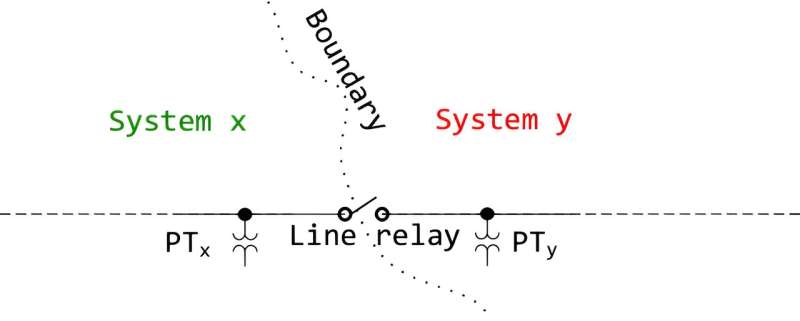
Self-healing electrical grids: It may sound like a concept from science fiction, with tiny robots or some sentient tech crawling around fixing power lines, but in a reality not far from fiction a team of researchers is bringing this idea to life.
What's not hard to imagine is the potential value of a self-healing grid, one able to adapt and bounce back to life, ensuring uninterrupted power even when assailed by a hurricane or a group of bad guys.
Together a team from Sandia National Laboratories and New Mexico State University is making this vision possible—not with tiny robots, but rather a cutting-edge library of algorithms. By coding these algorithms into grid relays, the system can quickly restore power to as many hospitals, grocery stores and homes as possible before grid operators can begin repairs or provide instructions.
"The ultimate goal is to enable systems to self-heal and form these ad hoc configurations when things go really bad," said Michael Ropp, Sandia electrical engineer and the project lead. "After the system is damaged or compromised, the system can automatically figure out how to get to a new steady-state that provides power to as many customers as it possibly can; that's what we mean by 'self-healing.' The key is that we're doing it entirely with local measurements, so there is no need for expensive fiber optics or human controllers."
The electrical grid of the future, as envisioned by Ropp and many others, will have more renewable energy supplies such as rooftop solar panels and wind turbines, along with local energy storage systems such as banks of batteries. Many of these systems will have the ability to form microgrids—small "islands" of power around hospitals, water treatment plants, and other critical infrastructure even if the main grid is down.
This Sandia project enables those microgrids to automatically heal themselves when damaged and connect with one another to share power and serve as many customers as possible.
While microgrids can increase the resiliency of the grid, they need to automatically perform certain critical functions like balancing energy production with energy consumption and reconfiguring if part of the system becomes damaged or unavailable. This self-healing capability must also be able to avoid connecting microgrids in a way that causes problems—for example, by forming an unintentional loop in the circuit.
Today, to achieve all of this in microgrids using power inverters, devices that convert the direct current produced by renewable energy sources into alternating current the grid can use, operators must install expensive high-speed communications that can be unreliable during disasters and vulnerable to cyberattacks.
The purpose of this project, Ropp said, is to support self-healing using only the measurements that each individual device can make, reducing cost while increasing reliability.
Resilient grids with lots of renewables
One key function that microgrids with lots of inverters need to do is to shut off a few customers when the demand for electricity becomes larger than the supply. In grids powered by natural gas, coal or nuclear power plants, when this demand-supply imbalance occurs, the frequency of the grid drops.
More information: Elijah Silva et al, Protection Elements for Self-Healing Microgrids Using Only Local Measurements, 2022 North American Power Symposium (NAPS) (2023). DOI: 10.1109/NAPS56150.2022.10012232
Michael E. Ropp et al, Detection and Prevention of Unintentional Formation of Loops in Self-Healing Power Systems and Microgrids, IEEE Transactions on Power Delivery (2023). DOI: 10.1109/TPWRD.2023.3254300
Citation: Developing algorithms for self-healing microgrids of the future (2024, January 23) retrieved 23 January 2024 from https://techxplore.com/news/2024-01-algorithms-microgrids-future.html
This document is subject to copyright. Apart from any fair dealing for the purpose of private study or research, no part may be reproduced without the written permission. The content is provided for information purposes only.
